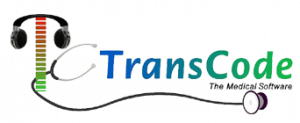Certified Risk Adjustment Coder (CRC)
A Certified Risk Adjustment Coder has proven by rigorous examination and experience that they know how to read a medical chart and assign the correct diagnosis (ICD-10-CM) codes for a wide variety of clinical cases and services for risk adjustment models (e.g., HCC, CDPS, and HHS Risk Adjustment). Invest in your future with the CRC certification—certified coders earn 40% more than non-credentialed coders.
The CRC’s abilities include:
- Expertise in reviewing and assigning accurate medical codes for diagnoses performed by physicians and other qualified healthcare providers in the office or facility setting (e.g., inpatient hospital)
- A sound knowledge of medical coding guidelines and regulations including compliance and reimbursement – allowing a CRC to understand the impact of diagnosis coding on risk adjustment payment models
- Understand the audit process for risk adjustment models
- Ability to identify and communicate documentation deficiencies to providers to improve documentation for accurate risk adjustment coding
- Knowledge of anatomy, pathophysiology, and medical terminology necessary to correctly code diagnoses
CRC Exam
The CRC Exam
- 150 multiple choice questions
- 5 hours 40 minutes to finish the exam
- $650 which includes one year membership
- One free retake
- Open code book (manuals)
The CRC examination consists of questions regarding the correct application of ICD-10-CM diagnosis codes used for risk adjustment coding.
The CRC exam thoroughly covers:
Compliance
- 23 multiple choice questions
- Identify common coding errors identified in RADV audits
- Understand the process for prospective audits
- Understand the process for RADV audits
- Understand the process for retrospective audits
Diagnosis Coding
- 60 multiple choice questions
- Demonstrate the ability to apply the Coding Clinic guidance to coding scenarios
- Demonstrate the ability to properly code amputations
- Demonstrate the ability to properly code artificial openings
- Demonstrate the ability to properly code atherosclerosis
- Demonstrate the ability to properly code AV fistulas
- Demonstrate the ability to properly code CHF
- Demonstrate the ability to properly code CKD
- Demonstrate the ability to properly code complications of devices
- Demonstrate the ability to properly code COPD
- Demonstrate the ability to properly code CVA/Stroke
- Demonstrate the ability to properly code dementia
- Demonstrate the ability to properly code depression
- Demonstrate the ability to properly code DVT
- Demonstrate the ability to properly code hypertension
- Demonstrate the ability to properly code malnutrition
- Demonstrate the ability to properly code manifestations of diseases (eg, DM, stroke, COPD)
- Demonstrate the ability to properly code mental disorders
- Demonstrate the ability to properly code neoplasms
- Demonstrate the ability to properly code pneumonia
- Demonstrate the ability to properly code pressure ulcers
- Demonstrate the ability to properly code pulmonary embolism
- Demonstrate the ability to properly code pulmonary fibrosis
- Demonstrate the ability to properly code seizures
- Demonstrate the ability to properly code skin ulcers
- Identify common coding errors in risk adjustment
- Identify diagnosis codes that risk adjust
- OBGYN specific conditions that risk adjust
- Pediatric specific conditions that risk adjust
Documentation Improvement
- 18 multiple choice questions
- Communicate documentation discrepancies with providers
- Identify documentation discrepancies
Pathophysiology/Medical Terminology/Anatomy
- 8 multiple choice questions
- Identify common acronyms for industry terminology
- Identify common acronyms for medical terminology
- Identify the anatomic structures, locations and functions
- Understand disease processes and interactions for common chronic conditions
- Understand the meaning of common medical terminology
Purpose and Use of Risk Adjustment Models
- 15 multiple choice questions
- Demonstrate the ability to apply trumping in the risk adjustment hierarchy
- Understand the use of data mining from data captured through risk adjustment coding
- Understand the use of predictive modeling from data captured through risk adjustment coding
Regulatory and Payer Requirements
- 9 multiple choice questions
- Review LCD/NCD and apply the policy to inpatient coding
- Identify services covered by Medicare Parts A, B, C, D
- Explain proper execution of the ABN and HINN
- Review private payer policy and apply to inpatient payment
- Identify precertification requirements
Quality Care
- 5 multiple choice questions
- Understand the purpose of HEDIS and alignment with risk adjustment
- Understand the purpose of STAR ratings and alignment with risk adjustment
Risk Adjustment Models
- 21 multiple choice questions
- Demonstrate the ability to apply the ACA risk adjustment model
- Demonstrate the ability to apply the CDPS risk adjustment model
- Demonstrate the ability to apply the HCC risk adjustment model
- Demonstrate the ability to apply the private payers risk adjustment model
- Understand elements needed to determine the risk adjustment score
Certification Requirements



